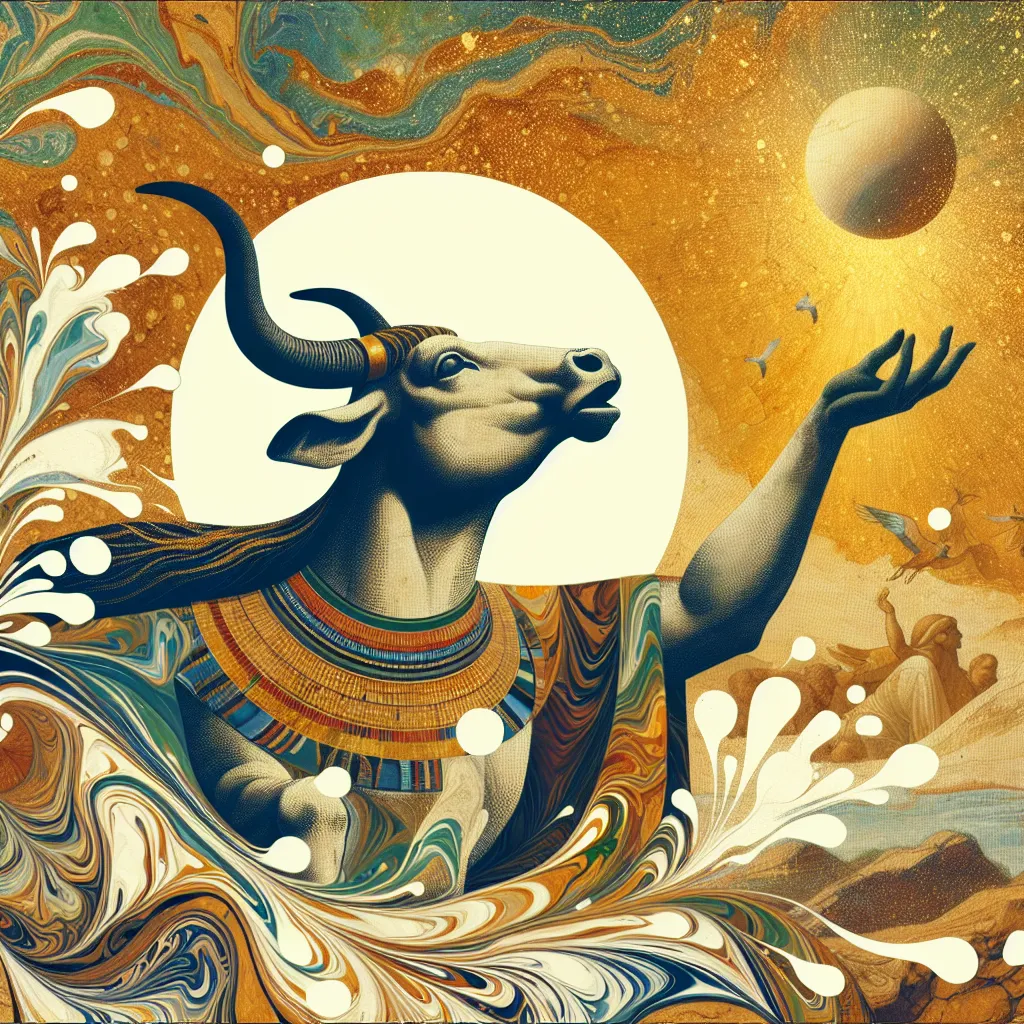
- Published on
- Authors

- Name
- You
The Breath of Hathor: Joy and Vitality in Egyptian Mythology
In the intricate tapestry of Egyptian mythology, few deities are as multifaceted and significant as Hathor. Known as the goddess of joy, love, fertility, and music, Hathor also embodies the essential life force that sustains all beings. Central to her spiritual significance is the concept of breath, viewed not simply as a physical process, but as a vital, divine force.
Hathor: The Multidimensional Goddess
Hathor's numerous roles and symbols underscore her importance in ancient Egypt. She was often depicted as a cow or a woman with cow's ears, signifying her nurturing and maternal aspects. Sometimes, she was shown holding a musical instrument, highlighting her role in joy and celebration.
Attributes and Symbols of Hathor
| Aspect | Symbol | Meaning |
|---|---|---|
| Maternal | Cow | Nurturance, motherhood |
| Joy | Sistrum (Instrument) | Music, celebration, and festivity |
| Fertility | Menat (Necklace) | Sexuality, fertility, and life sustenance |
| Love | Mirror | Beauty, intimacy, and affection |
The Breath of Life
Incorporated within Hathor's worship was the veneration of the breath. The Egyptians believed that breath was the quintessential essence of life, often connected to the Ka, or life-force.
Breath: Physical and Spiritual Life Force
The duality of Hathor's breath reveals a profound understanding of human existence. Not only did breath sustain the body physically, but it was also considered the divine spark that animated the soul. Breathing exercises and rituals were implemented to invoke Hathor's life-giving force, ensuring vitality and well-being.
Mystical Practices: Invoking Hathor's Breath
Ancient Egyptians devised various ceremonies and rituals to honor Hathor and harness her breath. These practices were designed both to please the goddess and cultivate an intrinsic connection with the divine breath.
Rituals and Ceremonies
Morning Gratitude Ritual
- Purpose: To honor Hathor and receive her life force at dawn.
- Procedure: Worshippers faced the rising sun, took deep, rhythmic breaths, and played music on instruments dedicated to Hathor.
Healing Breath Ceremony
- Purpose: To invoke Hathor's breath for healing.
- Procedure: Sick individuals participated in guided breathing exercises, surrounded by Hathorian symbols like the sistrum and cow imagery, while prayers were chanted to attract the goddess's favor.
Meditation for Joy and Vitality
A common practice was meditative breathing, focusing on Hathor's aspects of joy and vitality. By visualizing the breath as a glowing light filling the body, practitioners sought to align themselves with the goddess's joyful energy.
- **Meditation Steps**:
1. Sit comfortably with a straight spine.
2. Close your eyes and visualize Hathor in her cow or celestial form.
3. Inhale deeply, imagining a warm light entering your body.
4. Hold the breath briefly, focusing on joy and vitality.
5. Exhale slowly, releasing any negativity.
6. Repeat for 10 minutes.
Science Meets Mysticism
Modern science has gradually unveiled the physiological benefits of breathwork, corroborating ancient practices. Controlled breathing affects the parasympathetic nervous system, promoting relaxation and stress relief. This illustrates how mystical wisdom can intersect with modern understanding, enriching both perspectives.
Scientific Insights
| Benefit | Description |
|---|---|
| Stress Reduction | Deep breathing lowers cortisol levels. |
| Enhanced Concentration | Oxygen flow improves cognitive function. |
| Emotional Regulation | Breath control steadies mood and emotion. |
Conclusion
Hathor's mythology encapsulates a rich blend of joy, fertility, and life force, anchored by the profound significance of breath. By understanding and integrating these ancient practices, we can tap into a reservoir of vitality and bliss, bridging the wisdom of old with the knowledge of today.
May the breath of Hathor inspire joy and vitality within you.
